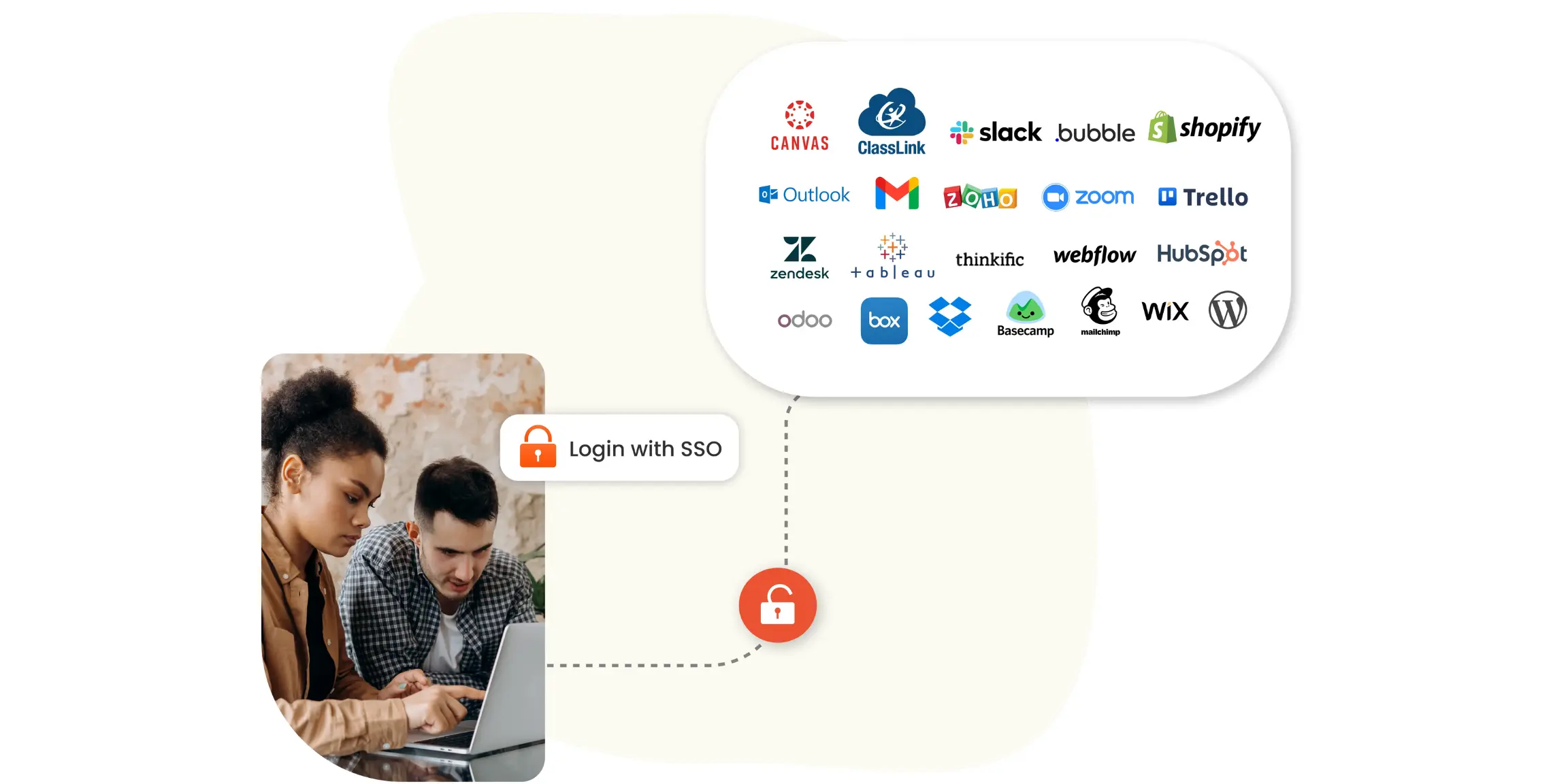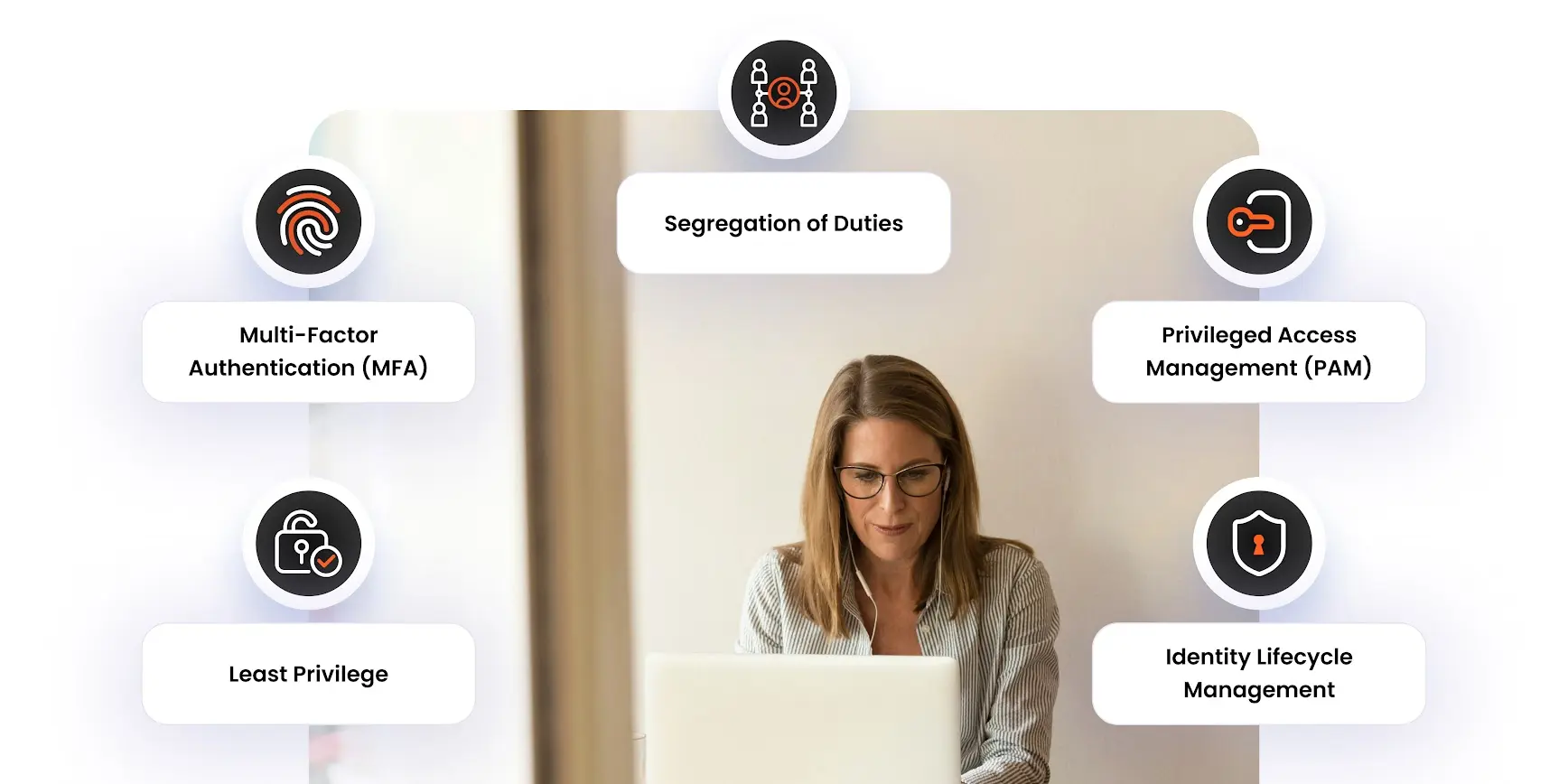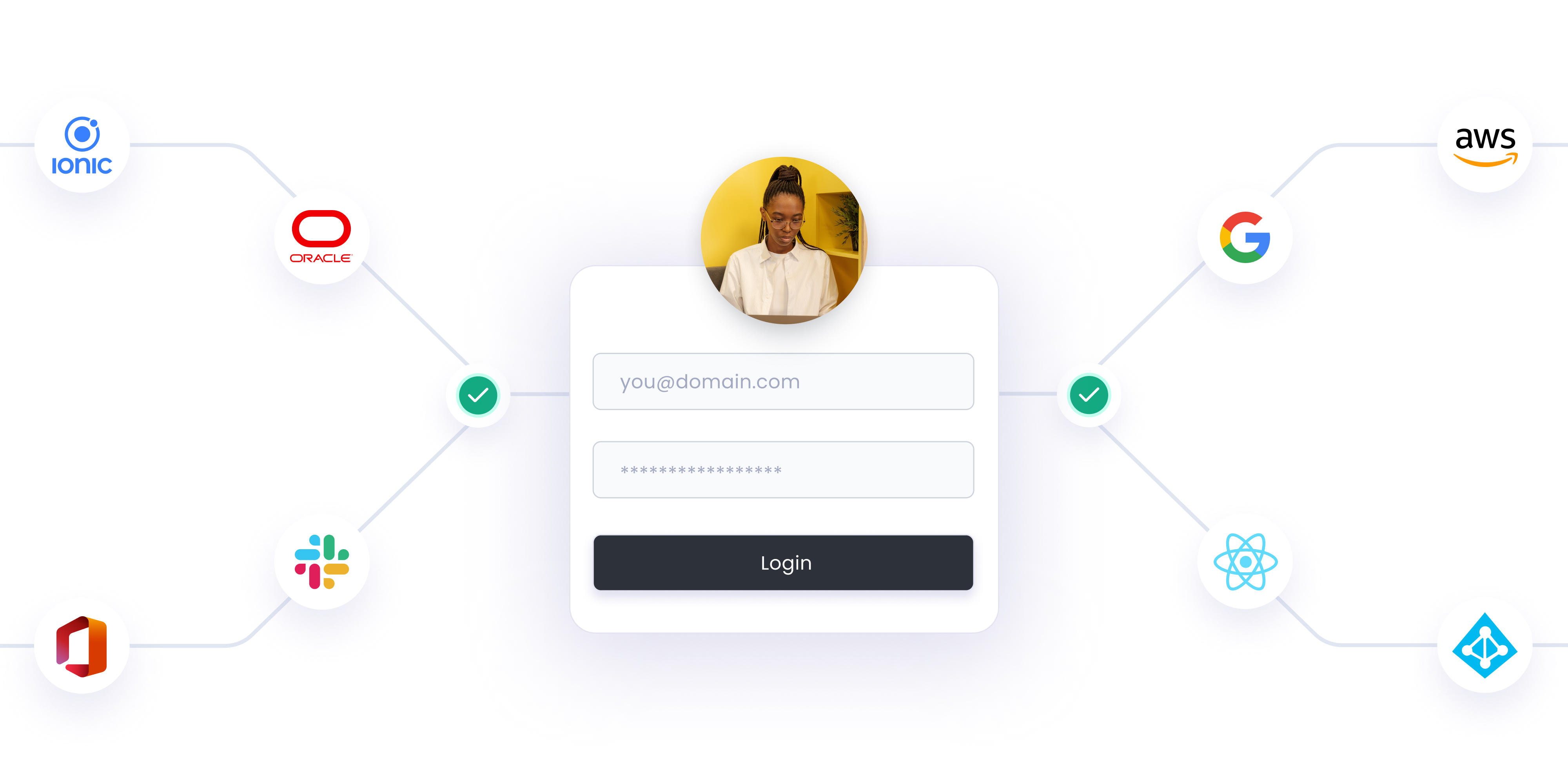In today's digital landscape, web applications have become an integral part of our personal and professional lives. However, with the increasing number of applications we use every day, managing multiple login credentials has become a challenging task. This is where Single Sign-On (SSO) for web applications comes to the rescue. Single Sign-On (SSO) for web applications is a robust authentication mechanism that enables users to access multiple web applications using a single set of login credentials. Users no longer need to remember and enter separate usernames and passwords for every application they use, providing a seamless and streamlined user experience. SSO in web applications simplifies the authentication process while enhancing security and productivity.
How does Single Sign On (SSO) work?
SSO works based upon an established relationship set up between an application, which is the service provider, and an identity provider, such as miniOrange. The mechanism works based on a certificate exchange between an identity provider and the service provider. In the context of Single Sign-On (SSO), a certificate is utilized to sign identity information transmitted from the identity provider to the service provider. This process ensures that the service provider can verify the authenticity and trustworthiness of the received data. In SSO, this identity data is typically encapsulated in tokens, which contain relevant user information such as their email address or username. These tokens serve as identifiers and provide essential details about the user during the authentication process.
The user initiates access to their desired application or website, which belongs to the Service Provider.
- The application or website (Service Provider) redirects the authentication request to the Identity Provider (IDP).
- The user attempts to sign in using their Identity Provider credentials.
- Once the IDP authentication is successful, the Identity Provider sends a Single Sign-On response back to the Service Provider.
- Upon receiving the SSO response, the user is granted access to log in and use the desired resource or application.
- The user can access other pre-configured apps or websites within the Service Provider's network, thanks to Single Sign-On (SSO) functionality.
Let us now take a high-level overview of how the Web Application SSO process works:
- The user signs in to the web application.
- The SSO tool either confirms the user's identity through verification with the Identity Provider (IDP) or initiates the verification process.
- If the SSO tool has already verified the user, they are automatically logged into the application.
- If the user has not yet been verified by the SSO tool, they are prompted to initiate the verification process.
Why Does Your Organization need Web Application SSO?
Web application Single Sign-On (SSO) enables users to not just access multiple web applications using a single set of login credentials, but also offers several organizational benefits, making it a valuable solution to consider. Let us see why your business needs Web SSO:
1. Boosts the productivity of IT employees:
Implementing Web SSO reduces the burden on IT employees by eliminating the need to manage multiple authentication systems and handle password-related issues. This allows IT teams to focus on more crucial tasks, thus improving their overall productivity and efficiency.
2. Improved Security Measures:
By implementing Web Application SSO, organizations can strengthen their security measures through enhanced authentication protocols, such as multi-factor authentication (MFA). This approach enables more effective enforcement of access controls, significantly reducing the risks associated with unauthorized access and bolstering overall security levels.
3. Enhancing Web App Security with Risk-Based Authentication (RBA):
By combining miniOrange's Risk-Based Authentication (RBA) with Web Application SSO, you can enhance the security of your web applications. RBA uses contextual data to assess the risk level of authentication requests. With RBA, organizations can now evaluate the potential risk based on factors like user location, device, IP, and time. A tailored approach enhances protection for web applications.
Use cases for SSO in Web Apps
Let us now take a look at the use cases of web applications:
1. Small to medium businesses organization that rely on multiple web applications: Small to medium organizations utilize a range of web applications for different purposes, such as project management, communication, and document collaboration. Implementing SSO simplifies the login process for employees, allowing them to access these applications with a single set of credentials. .
2. Businesses with an existing Active Directory (AD) infrastructure: Many organizations already have an Active Directory system in place, this serves as a central repository for user accounts and authentication. Integrating SSO with Active Directory can simplify access to web applications by leveraging existing user credentials, reducing the need for separate logins and password management.
3. Organizations implementing Identity and Access Management (IAM) strategy: Organizations implementing Identity and Access Management (IAM) strategies aim to enhance security, streamline user access and improve overall governance. Effective access management for admins is a key component of IAM. It enables administrators to control user permissions, assign roles and manage access to various resources and applications. With this organizations can ensure proper authorization, minimize security risks, and maintain granular control over user accounts and data.
4. Internal communication and collaboration tools: There are various internal communication and collaboration tools in an organization to facilitate seamless teamwork and document sharing among employees. By implementing SSO for These applications and tools, organizations can streamline access, improve user experience, and eliminate the hassle of managing multiple user credentials. Employees can navigate between different applications within the platform effortlessly, enhancing productivity and efficiency.
miniOrange’s modern-day Web SSO Solutions
1. Extensive SSO solution: Our solution supports standard protocols like SAML, JWT, OAuth, or OpenID Connect. For in-house and legacy apps who do not support these protocols, we provide them with connectors and enable SSO for any application.
2. Leverage existing identity sources: Allow SSO login using Active Directory, ADFS, LDAP, HR Systems, Microsoft 365, G Suite, or Zoho credentials.
3. Tailor-made SSO solution: Customizable registration and login page with multi-language support for personalized self-service portals.
4. Improvised reporting: Gain insights into application usage and user access activities from a centralized IT admin console.
5. Simplified user management: Add or remove multiple users, and grant or revoke their application access with a single click in the SSO admin portal.
6. Multiple deployment options: Choose the deployment mode that suits your needs - Cloud, On-Premise, or Hybrid.
Implementing Single Sign-On (SSO) for web applications offers a range of benefits, including streamlined access, enhanced security, increased productivity, and simplified user management. miniOrange's SSO solution provides extensive compatibility, leverages existing identity sources, offers customization options, provides improved reporting, simplifies user management, and offers flexible deployment options. With miniOrange, organizations can effectively streamline access and optimize authentication processes for their web applications.
Author





Leave a Comment